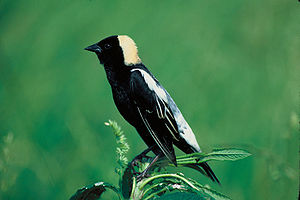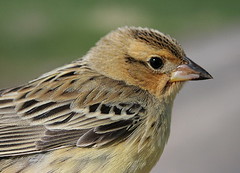Two of birdwatchers’ favorite birds, hummingbirds and orioles, travel thousands of miles in the spring to reach nesting grounds in the north. They can be attracted immediately to feeders with nectar (and fruit and jelly for orioles), making May a sweet month to feed the birds.
It only takes between 30 to 50 minutes for nectar to be digested, so hummingbirds must eat a lot and often. In fact, hummingbirds eat about every ten minutes and can drink up to twice their body weight in nectar every day.
It only takes between 30 to 50 minutes for nectar to be digested, so hummingbirds must eat a lot and often. In fact, hummingbirds eat about every ten minutes and can drink up to twice their body weight in nectar every day.
Only 5% of all avian families include nectar as an important part of their diet, making hummingbirds and orioles part of a very exclusive dining club. However other birds may be tempted by a sweet treat. I was recently sent a photo of one such visitor.
Dear Sarah, I finally got a picture of that sweet little Downy Woodpecker at the hummingbird feeder. It was taken through some blinds, so it isn't the clearest shot of him.
He has eaten at two of our nectar feeders, and I noticed that they are both the high perch models. One is a window feeder, and the other is a hanging one. I guess it is easier for them to feed from than the other style, but maybe I just haven't seen them at those. I hope you enjoy the picture.
That is a very good observation about the high perch. During the testing stage of the feeder, it was found that the high perch seems to encourage longer hummingbird visits at the feeder. We don't know why for certain. It could be that it provides a more comfortable position for the hummingbirds while feeding. I guess the downy is in favor of the high perch too. Thank you for sharing!
Related Articles:
- Woodpeckers at the nectar feeder http://bit.ly/JXA3sU
- What is the nectar recipe for hummingbirds? http://bit.ly/H7xvp3
- Hummingbird Information on Habitat and Habits http://bit.ly/It2WwE
- Where should I hang my hummingbird feeder? http://bit.ly/FQ9kxU
- Gardening for birds http://bit.ly/It58nR
Category ›
Question of the week





















































